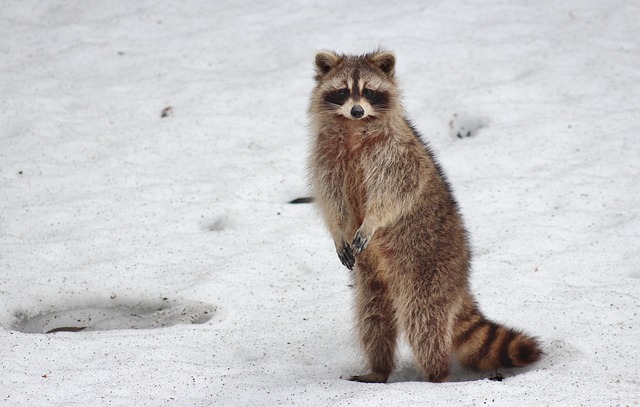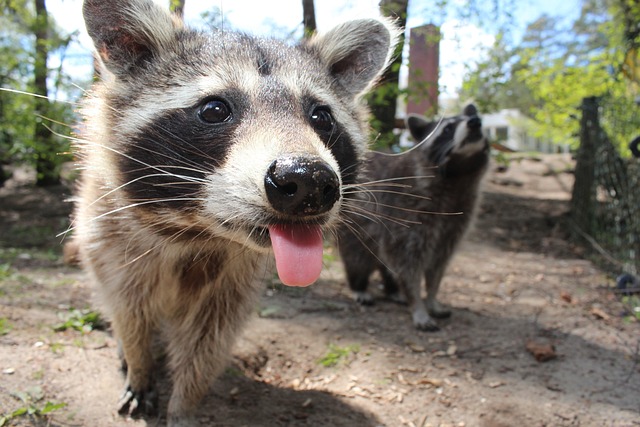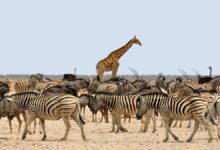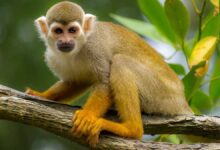Raccoons: The Clever and Adaptable Creatures of the Night

Raccoons are intelligent and adaptable animals that are found throughout North America. They are known for their masked faces, their dexterous paws, and their ability to climb trees.
Table of Contents
Scientific Name
Scientifically known as Procyon lotor, raccoons belong to the family Procyonidae. These medium-sized mammals are renowned for their distinctive appearance and remarkable adaptability, making them a prominent feature in various ecosystems across the Americas.
Types of Raccoons
Raccoons are remarkably versatile creatures, exhibiting a wide range of adaptations that allow them to thrive in diverse environments. Some notable species and subspecies include:
- Common Raccoon (Procyon lotor): This is the most widespread and recognized raccoon species, often found in urban areas, forests, and wetlands.
- Eastern Raccoon (Procyon lotor lotor): The Eastern raccoon is a subspecies found primarily in the eastern regions of North America.
- Mexican Raccoon (Procyon lotor mexicanus): Native to Mexico and Central America, this raccoon subspecies possesses unique characteristics suited to its habitat.
Evolutionary Pathways
The raccoon lineage traces back to ancient ancestors that once roamed the Earth. Over time, these adaptable mammals underwent significant evolutionary changes to become the resilient and versatile creatures we know today. Their ability to thrive in both natural and urban environments reflects their capacity to adapt and utilize available resources.
Behavioral Insights: Intelligence and Resourcefulness
Raccoons have earned a reputation for their remarkable intelligence and resourceful behavior. Their keen problem-solving skills and dexterous paws enable them to manipulate objects and even open containers. They are primarily nocturnal, meaning they are most active during the night, utilizing their excellent night vision and sensitive paws to navigate their surroundings.
Habitat Preferences: From Woodlands to Urban Landscapes
Raccoons exhibit an incredible range of habitat preferences. They can be found in various environments, including forests, wetlands, grasslands, and even urban landscapes. Their adaptability allows them to thrive in both natural ecosystems and human-altered environments, such as cities and suburban neighborhoods.
Dietary Habits
Raccoons are opportunistic omnivores, meaning they have a highly varied diet. They consume a wide range of foods, including fruits, nuts, insects, small mammals, amphibians, and even human food scraps. This adaptability ensures they can find sustenance in a variety of environments.
Predators and Threats
While raccoons may not have many natural predators due to their intelligence and agility, they are not exempt from threats. Large birds of prey, such as owls and eagles, can pose a danger, especially to young raccoons. Additionally, habitat loss and human activities, such as vehicle collisions and encounters with domestic animals, can impact their populations.
Reproductive Strategies and Life Cycle
Raccoons have fascinating reproductive patterns. Breeding typically occurs between January and June, with female raccoons giving birth to litters of kits. The number of kits in a litter can vary, ranging from two to seven. These kits are born blind and helpless, relying on their mother’s care for survival. They have a relatively short lifespan, with individuals in the wild living around 2 to 3 years on average, while those in protected environments can live up to 5 years or more.
Population Dynamics and Conservation Efforts
Raccoons are considered a species of least concern in terms of conservation status. Their adaptability and ability to coexist with human populations contribute to their stable numbers. However, conservation efforts are still crucial to ensure their well-being, particularly by raising awareness about responsible trash disposal and the potential impacts of feeding raccoons.
Conclusion
Raccoons, with their clever behaviors and adaptability, remind us of the fascinating diversity within the animal kingdom. By understanding their ecological roles, respecting their space, and coexisting responsibly, we can ensure that raccoons continue to thrive as fascinating members of our natural and urban environments.
FAQs
1- Can raccoons transmit diseases to humans?
Yes, they can carry diseases such as rabies. It’s important to avoid contact and ensure pets are properly vaccinated.
2- Are raccoons good climbers?
Absolutely! They are excellent climbers, using their sharp claws and nimble paws to ascend trees and structures.
3- Can raccoons be kept as pets?
In some regions, they may be kept as pets, but they require specialized care and can present challenges due to their wild instincts.
4- Do raccoons have predators other than humans?
Yes, they can fall prey to large birds of prey, such as owls, as well as larger carnivores like coyotes and foxes.
5- Why do raccoons have a black mask on their face?
The black mask around a raccoon’s eyes is believed to help reduce glare from light sources and enhance their night vision.






